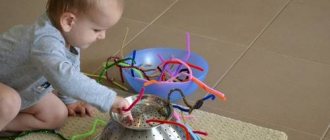August 30, 2019
Averyanova Sveta
A game for a child is not just entertainment, it helps him grow and develop. Just recently, it was difficult for parents to find a good toy for their son or daughter, but now fathers and mothers are faced with the opposite problem - how to resist buying. A few simple tips will help you avoid unnecessary expenses. So, what toys should you pass by in a store without stopping?
No “he’ll grow up”
Buying a mosaic or a simulator to develop logic for a one-year-old toddler is a bad idea. Toys “for growth” will not bring joy or benefit, but they can cause harm.
You should not buy a construction set or a set of figures that indicate an age that your child has not yet reached. Because small children put everything in their mouth. Avoid purchasing toys with small parts under 4cm to avoid choking hazards. Trust in this matter not your own intuition, but the responsibility of the manufacturer of a particular children's product.
But what toys are recommended to have at home for a child 0-1.5 years old:
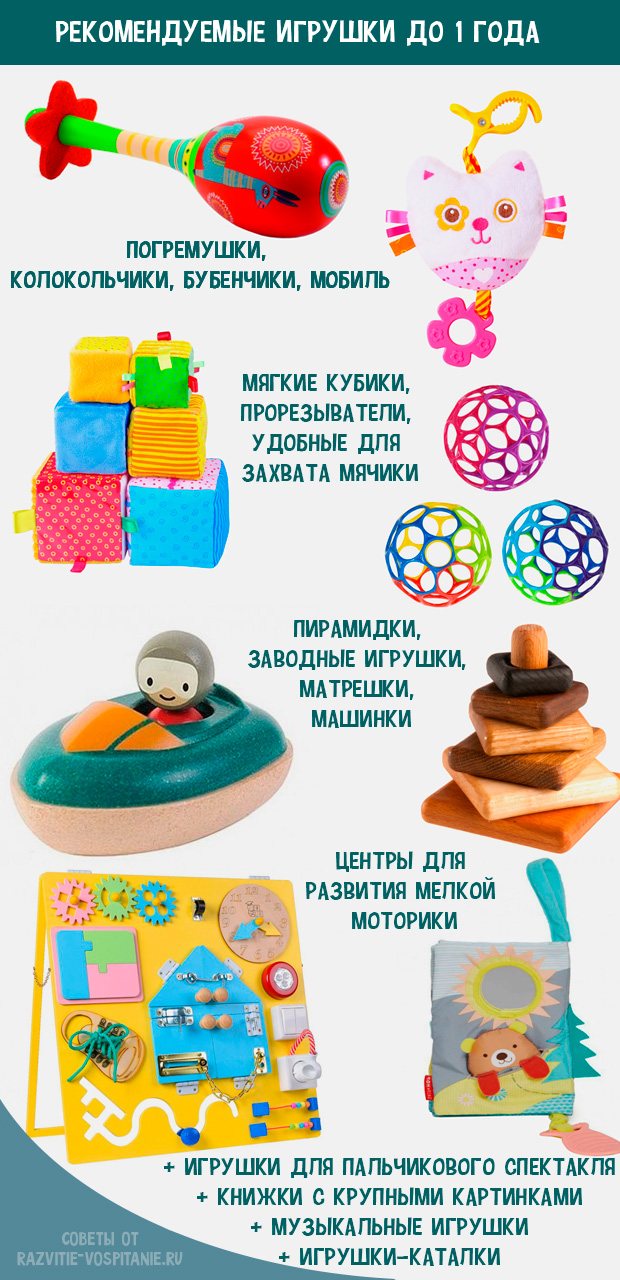
Children and danger should not meet
In the nursery there is no place for toys created “on the knee”, only for the profit of the seller. It is better to buy products for children from reliable manufacturers. This does not mean that you need to choose only expensive toys from famous brands. Avoid magnetic or fragile toys that could break off when pressed or bitten. Avoid toys with sharp edges.
There are any number of representatives of the middle price segment with an excellent reputation. A reliable manufacturer is a guarantee that dolls and cars have a safe design and are made from environmentally friendly materials.
From birth to one year
The baby develops vision, hearing, and tactile sensations, so bright objects of different shapes that make quiet sounds are required.
Rattles
The study of the world begins with them; Babies take rattles, rejoice when they hear the sound, and taste them. It is important that the first toys:
- were made from quality materials;
- did not have sharp corners;
- were distinguished by their strength;
- exceeded 4 cm in diameter so that the baby could not swallow them.
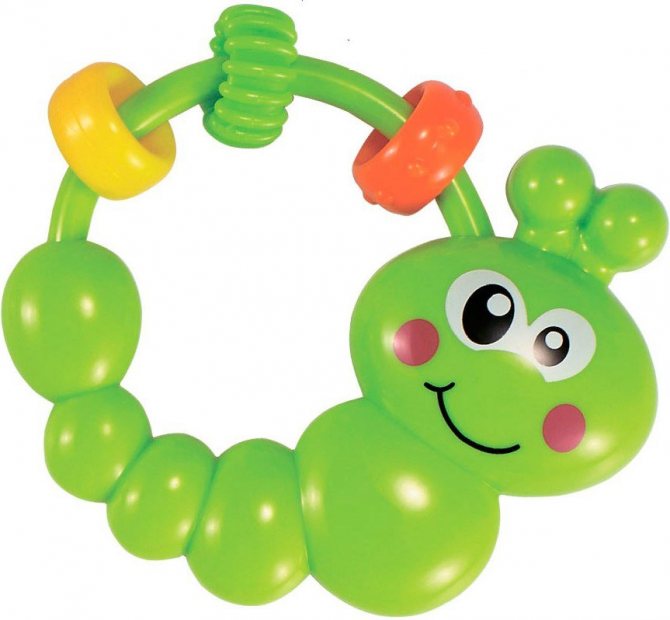
A simple rattle with securely fastened parts is best suited for a baby
Soft toy
Children are interested in touching and stroking their soft “friend”; Compact toys in the shape of animals - bears, bunnies - with short pile are suitable. The child should play like this under adult supervision.
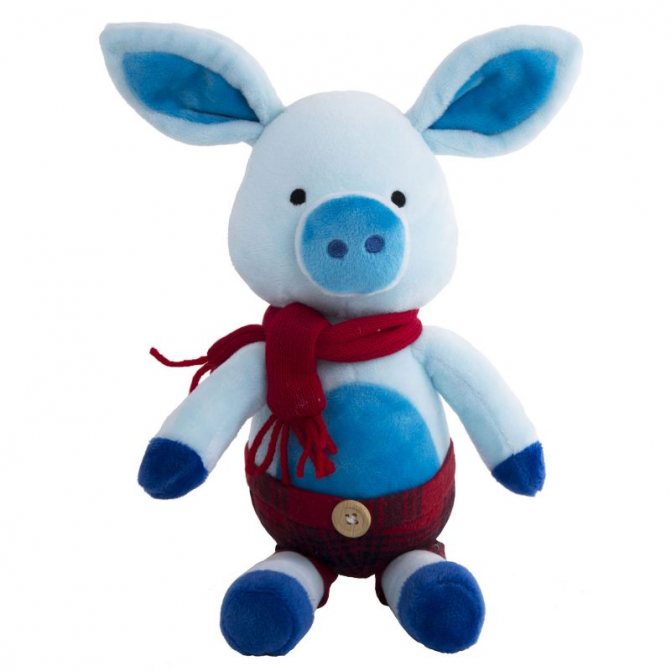
It’s better to take off the scarf from the pig, cut off the button on the pants - what if it comes off and the baby swallows it? - but otherwise the toy is safe for babies
For a child over six months old, buy soft fabric cubes with bright pictures - an excellent option for educational toys.
Ball
As the young “researcher” approaches one year of age, he develops motor activity; playing with an elastic ball gives dexterity to the arms and legs - the baby rolls the ball on the floor and kicks.
The diameter of the ball for a one-year-old child should not exceed 15 centimeters.
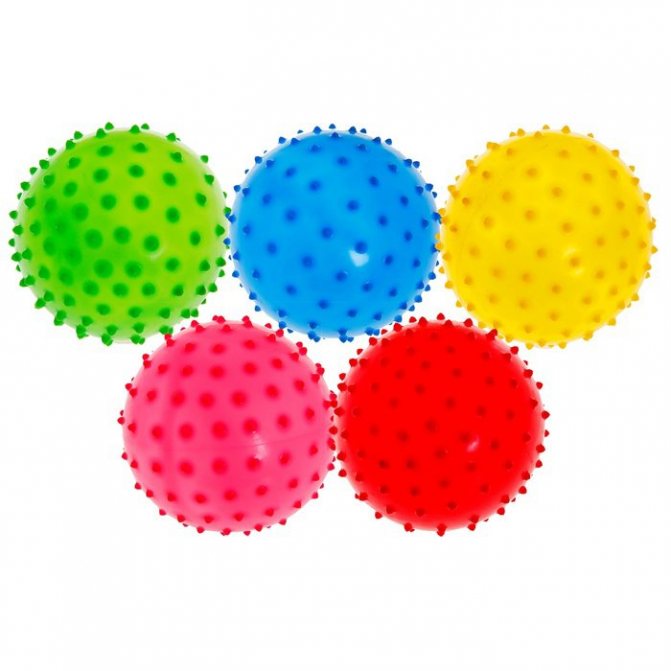
Balls can be smooth or with soft spikes - this is the baby’s first “sports equipment”
Pyramid
Our grandparents also used pyramids with large rings made of plaster. The kid fantasizes, stringing rings this way and that; Later he will learn to sort them by color and count.
A simple toy can hold the attention of a fidget for a long time.

It’s hard to imagine an “arsenal” of children’s toys without a pyramid; it develops imagination, teaches to distinguish colors
Ephemera toys
Cute dog or wonderful construction set? A gorgeous doll or a surprisingly life-like dinosaur? Do not succumb to the external charm of toy creatures or the child’s immediate desire to receive a gift! Look for truly original, functional products for your baby.
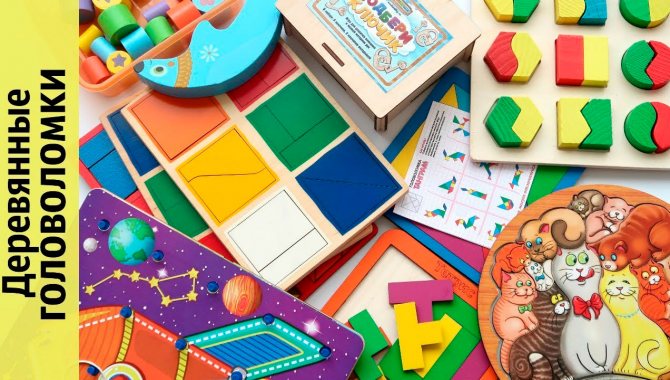
Buy only those toys that can teach your child something useful. It’s great if the set with your next purchase includes several accessories, instructions with different options for use, etc. Remember that imagination and creative thinking are activated when there is a shortage of materials for the game, and not when there is an excess of them. The rule “less is more” is your motto when going to children's stores.
Role Play Kits
When Jack Pressman's children began to fear visits to the doctor in 1922, he came up with the game "Doctor's Bag." Since then, doctor and hairdresser sets have been favorites of both mothers and children. They help children understand their place in society, feel like adults, and master adult skills and concepts. How to easily teach your child basic concepts related to money? Play “shop” with him. How to rid a child of the fear of hospitals? Put a doctor's robe on him and offer to “treat” his mother and sick toys. Along with traditional options, you can offer your child more “exotic” (but no less useful): for example, sets of kitchen utensils (scales, dishes, etc.) or cleaning sets (brushes, buckets, etc.).
Puppet theaters can also be classified as role-playing games: they are useful because they liberate children and develop their artistry; lay the foundations of emotional intelligence (EQ) - after all, in order to portray the hero of a fairy tale, you need to “get into his skin”, understand the reasons for his words and actions.
A nursery is not a museum
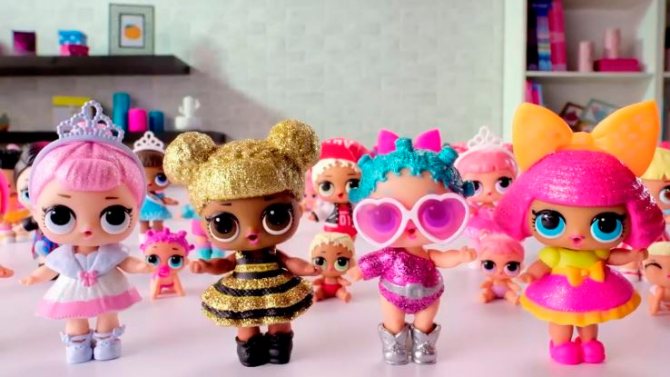
Marketers work tirelessly to create collections of toys that kids will want all of. It’s difficult to play with a set of almost identical kittens, hares, and dolls. Most likely, they will just stand idle, decorating a shelf in the room.
This can be easily avoided if you resist the temptation to buy the first representative of a large family. There should be only one favorite toy. You shouldn’t turn your baby’s room into an exhibition of dogs or Baby Born dolls.
“But here I am at your age...”
If as a child you adored wooden mushrooms or an electric railway with a barrier, this does not mean at all that your child is ready to share the delight of his parents and appreciate such “treasures” in his toy kingdom. Don't try to catch up by playing lotto or 80s construction sets with your child.
He will have his own favorites, and the baby must choose them himself!
Do not give children old Soviet toys that were made several decades ago. Because Dyes may contain lead.
Let's say no to XXL toys
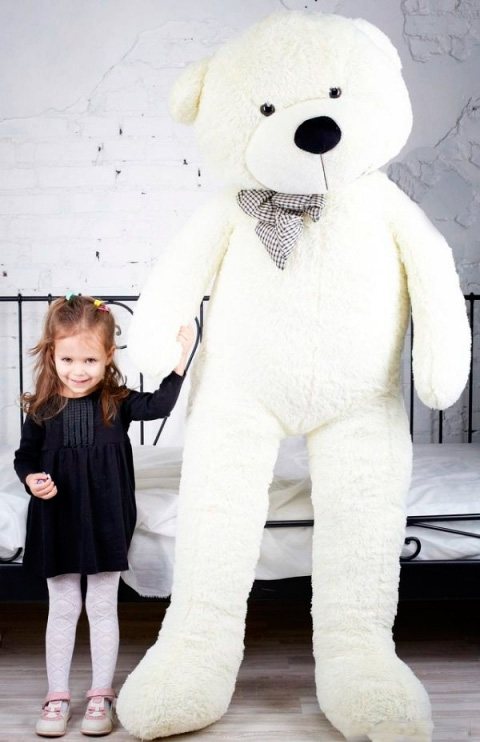
Even in a spacious room, very large soft animals or huge doll houses turn out to be witnesses, not participants, of children's fun.
It is physically difficult for a child to play with large objects; he does not feel confident around them, and this depresses imagination and independence. A huge teddy bear is an excellent option for a romantic gift for an adult, but such toys are useless for children.
What should a useful children's toy be?
A normal childhood is unthinkable without toys. Toys are an environment for a child that, on the one hand, allows him to explore the world around him, form and realize his creative abilities, express his feelings, and also teaches him to communicate and get to know himself. On the other hand, a toy is a product that an adult chooses and buys for his children. This type of product retains its rating at all times. Selecting toys is a serious and responsible matter. Not only the child’s play, but also the progress in his development depends on the success of this task.
Nowadays, it is extremely difficult for a child to choose a toy. Along with traditional dolls, bears, cars, balls, new, never-before-seen toys have appeared - dinosaurs, transformers, spiders, Pokemon, etc. How to navigate this sea of toy products? How to choose what your child needs? Given the current market conditions, it is not easy to figure this out. In most cases, toys are chosen and purchased spontaneously, due to prevailing circumstances or external, superficial characteristics of the toy (attractiveness, size, cost, desire to please the baby). Parents either do not take into account the developmental potential of the toy, its pedagogical “usefulness” at all, or completely trust the attached annotation, in which the manufacturer writes everything he wants. As a result, children's rooms are often littered with the same type and, as a rule, useless (and sometimes harmful!) toys, while the ones that are necessary and important for children's development are nowhere to be found. Therefore, when choosing toys, it is extremely important to take into account not only their beauty and sanitary and hygienic properties, but also the possible psychological impact on the child’s development.
Let's start our conversation with what toys are needed for and what each of them can provide for children's development. The main function of the toy is to stimulate children's activity. The toy should stimulate the child’s meaningful activity (both external and internal). Its developmental and educational effect is determined primarily by the nature of the game action. This aspect should be clearly understood when buying toys: when choosing this or that toy, you need to immediately imagine what your child will do with it.
It is quite obvious that children are playing with the toy. Toys that stimulate role-playing and directing play are best suited for preschoolers to play with. For role-playing games, it is good to have sets for playing a doctor, a hairdresser, a shop, as well as costume details and attributes that help you take on and maintain the role of the game (a doctor’s robe and bandage, a steering wheel for a car, a police cap, a red cap, etc.) . This group also includes transport toys (trucks, trains, cars that allow you to transport something).
For director's play, you need small and, if possible, cute toys that require communication or treatment as living characters - bears, bunnies, dogs - and of course dolls with all kinds of doll utensils. I would like to talk more about dolls.
The fact is that recently the doll world of our children is changing rapidly. Dolls appear that are more and more detailed and automated, that is, as if living an independent life. For example, the choice of now traditional Barbies has expanded significantly and has become more specific: Barbie with a dog, Barbie on a bicycle, Barbie on skis, Barbie a geography teacher, etc. In each version, the doll comes with an extensive set of corresponding accessories (for example, a dog – leash, bowl, brush and even food). The child practically no longer needs to invent anything - he just needs to open the box and use all this wealth for its intended purpose. The pinnacle of naturalism is a doll waiting for a baby: the “door” in the stomach opens, and from there a baby comes out with all the anatomical details.
Most recently, Barbie has been “successfully” complemented by Bratz dolls. These dolls create the image of a tough, seasoned teenage girl, with bright makeup, languid eyes and defiant, trendy clothes. They are also almost always accompanied by a rich set of various attributes: a mirror, lipstick, a mobile phone, a pocket computer, a unisex wardrobe, accessories and furniture for a business woman. Sometimes such sets also include a buffet with a bar, a luxury car, a motorcycle or bicycle, etc.
Baby dolls that reproduce in detail a living baby (Baby born) are very popular among girls. The pink body with folds, bandages and signs of gender creates the complete illusion of a real newborn. They “know how” to eat and cope with natural needs. Such dolls are being technically improved literally before our eyes. They have growing teeth that can be “pushed back”, a swelling (and then shrinking) body. Particularly impressive are interactive dolls and animals that, on a certain command or signal, begin to sing, dance, wave their arms and perform all sorts of funny actions, for example, a bear cub, a kitten or a puppy that can hug, wag its tail, recognize the owner’s voice and respond to it. “This is who will become your true friend!” – written in the annotation. Another example is a robot portraying a pop singer: when you press different buttons, with glowing light-bulb eyes, it begins to sing hits very loudly and hysterically in different languages, while moving along the floor with terrible speed. Looks impressive and funny.
The so-called makeup artist kits are absolutely shocking. This is a woman's head (life-size or miniature), offered as a training device for teaching the art of makeup or hairdressing. Of course, hair and makeup accessories are also included. They are sometimes stored inside (!) the head, which opens like a box on hinges, or even completely cut in half for ease of reconnection and separation.
And quite a lot of such “new dolls” have appeared. These are various kinds of transformers, and monsters, and Pokemon, etc. All of them have a certain appeal for both children and adults, they seem very modern, because they are well equipped technically, have a bright, sometimes shocking appearance and correspond to the latest fashion trends . How to treat these new products on the toy market from the point of view of child development? What do they bring to the child? To answer these questions, you need to return to the essence of the doll question and look at what a doll is and why a preschooler needs it.
A doll is, first of all, an image of a person. This toy most of all evokes and enlivens the child's idea of his own humanity. Therefore, a doll in a children's game can and should act like a person. Carrying out actions with dolls, the baby is included in the world of people: he reflects his experience, especially what worries him, and reproduces the actions of familiar people or fairy-tale characters. In such a game, two interrelated but opposite processes occur simultaneously. On the one hand, the child puts his words, thoughts, experiences into the doll’s mouth and “organism,” i.e., it is, as it were, an external expression of his inner world, his unique “mouthpiece.” On the other hand, the same doll sets the image of a person who becomes a model for the child to emulate, a role model, and it is through the doll that ideas about a person and the categories associated with him (beautiful and ugly, good) “enter” the child’s soul and consciousness. and bad, good and evil).
The preschooler sees himself in the doll. A child with a sufficiently developed imagination can imagine the same face as cheerful, sad, tired, preoccupied, crafty, careless. The baby brings the doll to life, and it gains the ability to act and show its character. But imagination and imagination require space. In this case, it is the absence of redundant details, the lack of details that is the fertile soil that nourishes the development of children's imagination.
What happens when a child has clearly fixed human images and a programmed way of behavior in a toy? The first is a blockage, inhibition of the child’s imagination and independence. Dolls with detailed faces, poses, and accessories impose on the child something once and for all given, predetermined by someone - something that has nothing to do with his own play ideas. If a preschooler with well-developed play can still be, in a sense, independent of the imposed image and is able to develop his own play line, then children with undeveloped play (and these are the majority now) reproduce exactly the character of behavior that is expressed in the doll. The set image is so strong that it cannot be changed. So, playing with monsters is always a chase, a battle, and devouring. Playing with Barbie dolls is an endless series of dressing up and shopping, narcissism and competition. This theme, in a certain sense, is complemented by a new product - the Bratz doll, for which home is just a computer desk and a bar, and leisure time is a youth “party” far from household concerns in “cool” cars. Playing with a robot baby turns into training conditioned reflexes: to make him laugh, you need to press his head, to start dancing, rock him once, to cry, rock him three times, etc.
The disadvantage of such dolls is not even that they are too naturalistic, that their aggressiveness or sexual characteristics are too pronounced, but that they deprive the child of the opportunity to act independently: to invent, imagine and think, i.e. to play. These dolls themselves offer strictly defined actions: what and how to wear, what button to press, what to feed, etc. Children can only reproduce the proposed stereotypes of actions, which they do willingly. The main qualities that should be manifested and developed in children's games - freedom of action, emotional richness, creative activity, ingenuity - remain completely unclaimed and do not develop. At the same time, children quickly get used to such beautiful and “complete” toys and ask for more and more of them. A child who receives more and more toys of this kind practically does not play with them, but only manipulates them. He begins to depend on what is “inherent” in such a toy, and willingly obeys its demands. It seems to the child that he is manipulating the toy, but in reality the toy itself is imposing certain actions on him.
Thus, modern toys are moving further and further away from children's creative play towards consumerism and the mechanical use of operations laid down by someone.
Recently, the problem of children's dependence on various types of games has become increasingly acute: computer games, game consoles, slot machines, etc. Children do not want and cannot overcome the “magnetism” of these activities; they leave friends, books, studies and go out into the world acute virtual sensations, thus losing their freedom and living by the imposed rules of the game. It can be assumed that the first step towards such independence is playing with toys that deprive children of initiative, imposing their own “rules of the game” on them.
Another danger posed by the latest advances in the toy industry is related to the very image of the doll. The fact is that through playing with human images, a child’s behavior model is formed not only in the game, but also in everyday life outside the game. Doll figures literally have a physical effect on children in early and preschool age. Unfortunately, very little attention is paid to this phenomenon. Meanwhile, it is extremely important because it directly has a profound formative physiological effect on the child’s physical appearance.
Let us give an interesting case as an example. A three and a half year old girl received a rag doll sewn by her mother as a gift. Mom was in a hurry and didn’t make the doll’s eyes and mouth carefully enough. As a result, the face turned out to be somewhat asymmetrical, with eyes of different sizes. The girl really liked the doll, she called it by her name, played with it, and put it to bed. A couple of months later, the mother noticed that her daughter was squinting the eye that was smaller on the doll, and her mouth was curling up a little. I had to redo the doll's face. After some time, the distortions in the daughter’s facial expressions disappeared.
It has been noticed that children reproduce the facial expression, pose and posture of their favorite doll. Sometimes they rub or scratch their lower back or back where their favorite doll has a maker's stamp. Such projection and bodily imitation is explained by the fact that it is in the first seven years of life that a child plastically builds his body. External influences are imprinted not only in his consciousness, but literally in his body. Subsequently, these imprinted influences will only grow with all the rightness and wrongness laid down in early and preschool age. Therefore, the “scary”, aggressive or arrogant expression on the doll’s face, the flaws in its figure can stick to your child, literally “imprinting” on him. It turns out that both the mental and physical health of your own children depends on your conscious approach to choosing a doll.
However, dolls, although important, are far from the only toys preschoolers need for play. In addition to them, there is a huge amount of other gaming materials: all kinds of cubes, pyramids, construction sets, puzzles, mosaics, lotto, dominoes, printed board games, etc. All of them, of course, are necessary for children and can bring them not only pleasure, but and developmental benefits, as they contribute to the development of children's intellectual, cognitive and motor abilities. However, the developmental effect of a particular toy depends on what and how the child can do with it.
The possibility (or impossibility) of a child’s active action depends on many qualities of the toy. Sometimes adults think that the more different properties and qualities a toy contains, the better. Thus, a plastic elephant on wheels, which is both a train and a telephone, opens up seemingly diverse opportunities for children's activities. But such “diversity” disorients the baby - he does not know what to do with this complex toy - carry it, talk on the phone or feed the elephant. Moreover, the full implementation of the listed actions is very limited: it is impossible to transport anything on such an elephant (you can’t put anything down and you can’t put anyone on board); the telephone receiver keeps falling off; an elephant is not fully an elephant, since it is a telephone on wheels. It would be much more useful in this case to separate these functions and offer the child three objects that are different and understandable in their purpose and mode of action.
Recently, a large number of new unusual, interesting in design sets for children's creativity have appeared. Such sets involve a variety of productive types of children's activities: embroidery, making patterns or frescoes from cereals or colored sand, making engravings, painting with paints on any surface (glass, clay, fabric, etc.). Unfortunately, such sets too limit the choice of materials for children’s independent, free creative activity. But it is precisely this kind of activity that most develops a child’s creative abilities and independent thinking.
Modern designers are very diverse. Various versions of the wonderful Lego constructor, the flexible Takeshi constructor, different types of “building material” - from small sets to large-sized structures - all of them are certainly useful for preschoolers, if, of course, they allow them to independently create different buildings and structures - houses, furniture, castles, parks, etc. It is especially important if the buildings created by the child will subsequently be included in games - with dolls or with friends.
However, the “usefulness” of a toy is far from the only criterion for evaluating it. The toy must bring joy and pleasure to the baby. It should be exciting and attractive, which, in fact, makes it a toy, and not a teaching aid. The interests and preferences of children and adults often do not coincide. Adults are attracted by the external beauty of the toy, its complexity, richness of details, or the developmental value described in the annotation. Children have slightly different “priorities”. They may prefer a particular toy because they have seen a similar one with their friends. However, the main advantage of a toy that attracts a baby is the opportunity to do something with it. Only if the toy evokes a desire to act with it (disassemble and assemble, move various parts, carry, make new sounds, etc.), will the child want to quickly pick it up and start playing.
For a toy to fulfill its developmental role, it must not only be attractive, but also open to the manifestation of various forms of child activity. Objects that involve, albeit useful, but stereotypical, monotonous actions, can become material for exercises and training, but not games. If the material of a child’s game, although attractive, is rigid and presupposes a strictly defined method of use (such as wind-up, mechanical or some electronic toys), then the game itself will turn out to be simply an exercise or pastime, and not an active, creative activity. The more defined in its method of use and complete in its design a toy is, the less scope it leaves for children's creativity. With toys stuffed with technical innovations, the child does not need to invent or imagine anything. Toys, which are simpler in design and less defined in how to operate with them, allow for a wide range of play actions. Accordingly, the material of the game should be quite simple and at the same time flexible, allowing for complication, variability and simplification of the tasks. The toy should be as open to transformation as possible. Such universal and popular toys at all times, such as balls, cubes, inserts, ordinary dolls, etc., cannot bore a child, since due to their simplicity they are extremely flexible, allowing for endless complications and thousands of new combinations with them. Thus, openness to a variety of actions, flexibility and simplicity are the most important requirements for a good toy.
The child's play should be independent (of course, when he already knows how to play). Therefore, a toy should be considered as a special object that allows the child to feel self-confidence, as a support for children’s independent actions, helping them to feel their own competence and autonomy. The material of the game should allow the formulation and independent solution of increasingly complex problems. The presence of not only a “riddle” in a toy, but also a hint arouses interest in it and a desire to act. The subject of the game must contain clear guidelines for the child’s independent activity. As an example, we can cite such well-known folk toys as pyramids, nesting dolls, and inserts, which themselves “suggest” the correct method of action. Completely new, unfamiliar and incomprehensible objects for children, which have no analogues in their personal experience, do not provide “hints” for independent actions and are more likely to frighten them than to make them want to play with them. The optimal combination of novelty and recognition, the presence of a task and guidelines for solving it is an important quality of a toy that stimulates children's activity.
So, the child’s actions with a toy must be meaningful, variable and independent. Parents can use all these requirements for a toy when choosing the right item for their children to play with. It is also important to evaluate the technical qualities of the toy: its strength and workmanship. If, say, a car's wheels fall off, or a doll's hair comes out or its head hangs loose, this will make normal play with it impossible and will bring serious distress to the child.
And finally the most important thing. Not a single toy by itself will teach a child to play and develop his abilities. A toy can only help or interfere with real children’s play, turning the game into automatic manipulation. But if a child does not know how to play, if he lacks imagination, the desire to think, transform and create new images and stories, no toys will help. Only in the hands of an older partner who knows how to play will a toy become alive, necessary, stimulating the imagination, and therefore useful.



